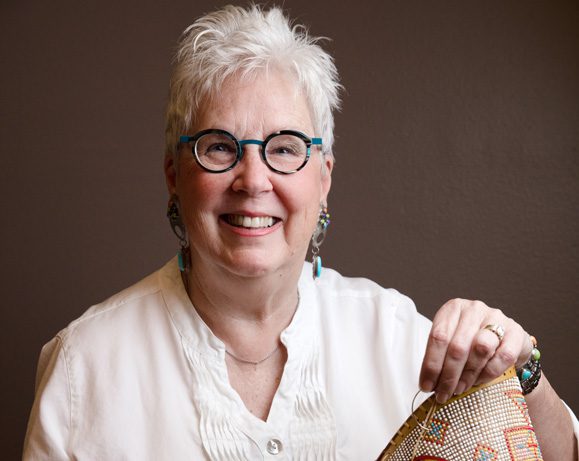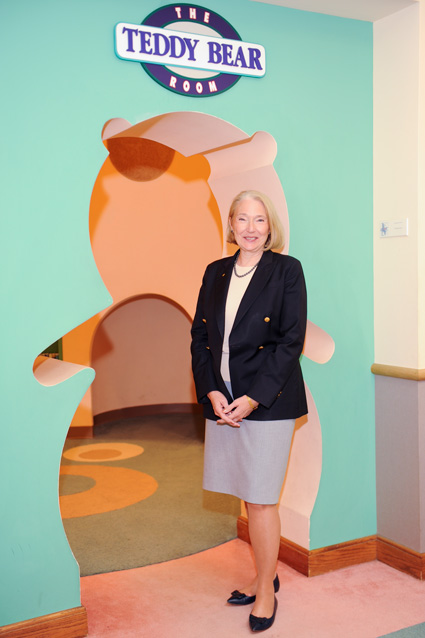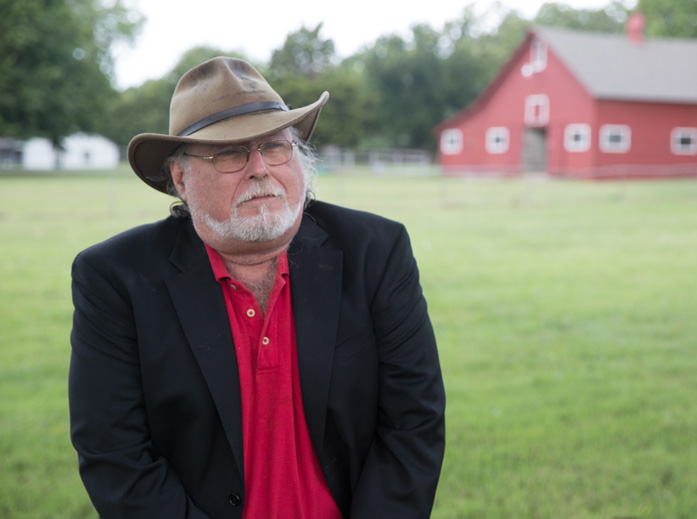
[dropcap]Eight[/dropcap] years ago, Judy Kelley saw several jewel-tone gourds at Oklahoma City’s Paseo Arts Festival, and the experience changed her life.
“My jaw dropped,” she says. “I came upon artist John Hernandez’s beautiful, vase-like things, the likes of which I had never seen before. They were colored gourds trimmed with coiled pine needles. I had to buy one.”
Two months later, a class with Hernandez hooked her on creating decorative gourds. Hernandez supplied her first gourd.
“My first box of small, canteen-shaped gourds arrived around November 2007. As I peered inside and began removing each gourd, I felt as if someone had sent me a box of kittens,” she recalls.
Kelley traces her fascination with the art of the American Indian culture to growing up in Muskogee, which has a vibrant Native community. Her parents were reared in Osage County, also a bastion of heritage. Her husband is part Cherokee.
“How could I not have a lifelong interest in and respect of Indian culture?” she asks. “I began collecting art by Native Americans with a print by Kevin Red Star in 1980 and, recently, a painting by Virginia Stroud, a Cherokee-Kiowa artist.”
Kelley embraced gourd art with a passion for the color and cultures of the American West.
“Many gourd artists leave the gourd intact and paint, carve or wood-burn only. I like to decorate my gourds with embellishments like cowrie shells and elk teeth replicas. The pine needle coils edging the opening on my vertical basketry is suggestive of trim on a robe worn by a feminine figure or a delicate, multi-strand necklace on pieces painted with inks and faux beading. On a bowl, the pine needle coils add a finishing touch. Each piece is as individual as the gourd’s shape,” Kelley notes.
In the process of perfecting her art, Kelley also became familiar with the technical tools of this intricate art form.
After several years working with various shapes and sizes of gourds – all decorated with pine needles fashioned in loops, coils and twists – she began teaching herself wood-burning techniques, incorporating the designs of Navajo and Pueblo people from Arizona and New Mexico.
Her long pine needles come from North Carolina, which she obtains from Judy Mallow, the nation’s authority on pine needle basketry. Recently, to raise attention to the beadwork of American Indian women, Kelley perfected a faux bead painting technique.
In July, she made her second trek to Fallbrook, Calif., home of one of the country’s largest gourd farms. She filled her car with dirt-covered gourds, which required extensive cleaning upon her arrival home.
Kelley says the real artistry in working with gourds is how the shape is cut, the colors and embellishments – shells and faux beading – and how the pine needles are coiled: sometimes overlapping, sometimes floating.
She studies historical beadwork by the plains and mountain tribes for inspiration and avoids symbols sacred to the various tribes.
A former award-winning journalist for newspapers and nonprofit and public institutions before retiring in 2011, Kelley says her passion for gourd art is much more than a passing fancy. It’s her way, she says, of raising consciousness about art of the American Indian culture.
Gallery owners have applauded her work. She now has decorative gourds at JRB Art at the Elms Gallery and the museum store at the National Cowboy & Western Heritage Museum in Oklahoma City; and the Wilcox Galleries in Jackson Hole, Wyo.
Kelley seems a bit surprised about her success.
“No one goes to an art gallery to buy a gourd,” she says. “But I’m thrilled when they do.”


























